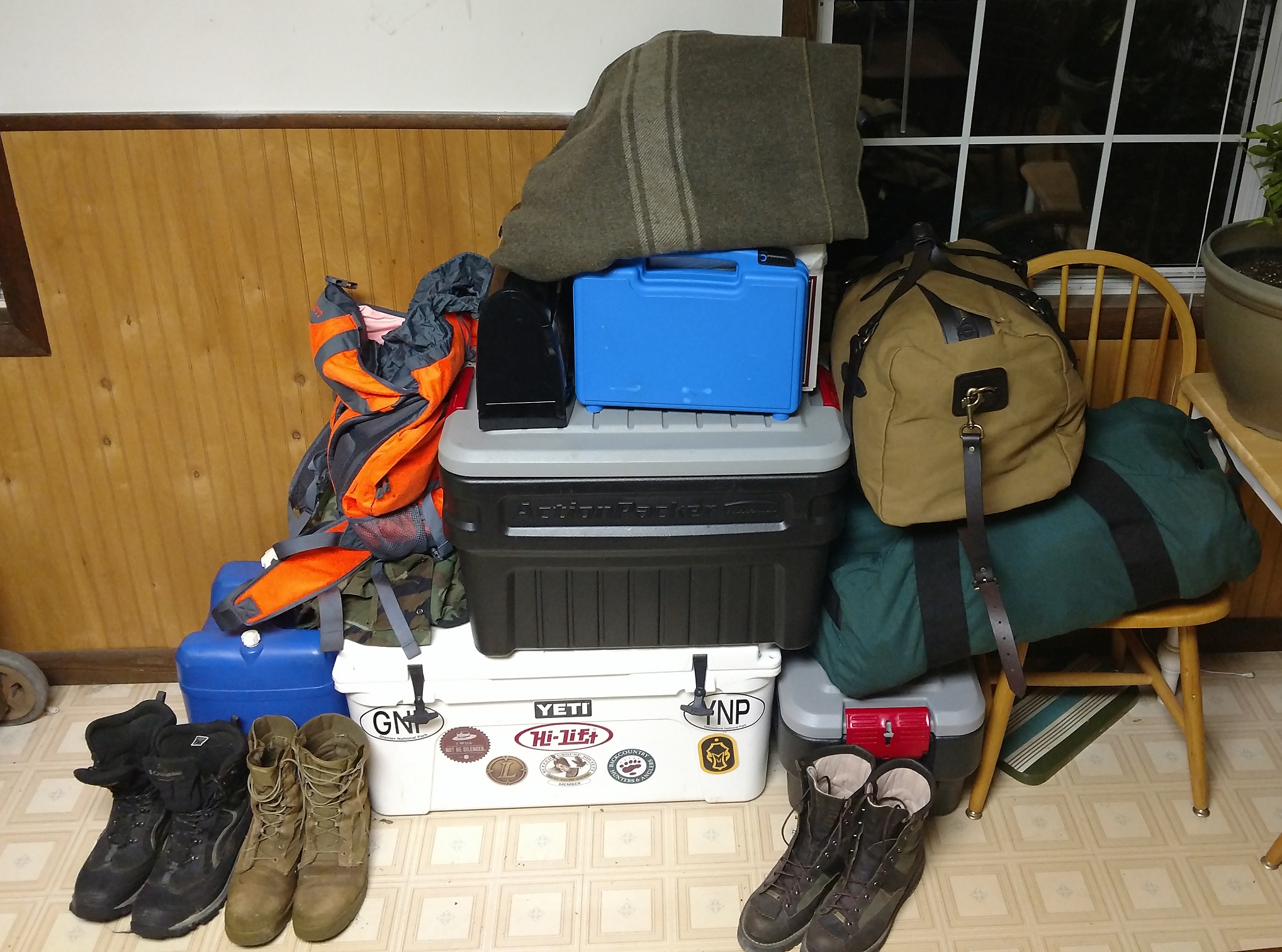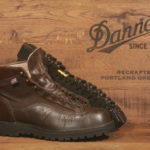I’ve returned from my month in the mountains hunting various critters on public land in PA’s NorthWest and NorthCentral regions and did fairly well. I shared in some meat from a buddy’s buck, and have several pheasants and squirrel from small game in my freezer to show from my own efforts. I’ve written before on social media about the importance of the pre-hunt gear check, but after a long hunt — especially one where you’ve traveled significant distances and spent a ton of time in the field the post-hunt check is equally important. By that I mean checking all of your gear, making sure you take copious notes of what went wrong or what you need to improve the trip. For me, I use this oppurtunity from year to year to “right size” my pack out.
I spend a month without laundry in the woods at our cabin with only Sundays off from hunting, this means that my gear takes a beating but it also means that I have the potential to grossly over pack. You never know what the weather will do, especially over the course of an entire month spanning November to December. Some years we have a foot of snow towards the end of the trip when it was 70F in the beginning. I need to be vigilant about what colors to pack, as I shouldn’t be running around wearing black during black bear season the same way that it’s not a stellar idea to be wearing my Carhartt overalls during doe season. How does someone address those issues?
- Buy the highest quality gear you can afford. I find that in general my hiking socks will last two days before getting “ripe” and failing the smell test on a human nose. Who knows how a whitetail will react if they smell that, but I’m going to edge on “poorly”. Much more than that on a standard cotton sock and you’re starting to wear holes in it.
- Bring multi-use gear. I’m hugely guilty of not doing this. My most multi-use gear is probably my layering hoodie and mock neck, other than that I’ve got upland gear, stuff I wear for deer, and stuff I wear for bear. Try to use the same stuff for as much as possible and your kit will get smaller and lighter as a result.
- On that note, avoid cotton. Cotton does little to wick away moisture from the body and stinks to high heaven. If you can afford it, go with UnderArmour or something made with Merino Wool. Merino is soft and does not retain the nasty stink of both cotton and synthetics. I bought some FirstLite gear last season and I’m a believer. My previous mentality was to buy UA gear when I could afford it, and simply to swap it out every two or so days for scent management. This led to a large pile of laundry at the end of the trip and didn’t really bear out results. It worked really well for my trip out of the cabin, and works for me to use my ColdGear out of the house, but does not really help for trips living out of the truck or fly-away trips.
- Take care of your boots and camo. Next to your weapon these are probably the most expensive parts of your kit. If you wear real leather boots make sure they get conditioned after a hard time in the field. Mine see wet and dry conditions and are laid out to dry next to our furnace at night. This leads to a lot of shrinking and expanding in leather that can cause cracks. Make sure you pay attention to your boots and condition the leather so it continues to be pliable and you don’t have a footwear failure in the woods. No one likes wet socks.
- You’ll probably get wet. Make sure you have extra socks and underwear to account for at least one exposure to water in order for you to get dry. When I pack, I try to leave something like 10% overage on underwear and socks specifically knowing that I will get wet. On a backpacking trip this equates to one of each in a dry bag, but on my month long trip I might take a spill in a swamp and get rain soaked to my core, so it usually accounts for three pairs of each — until I swapped out for some higher quality skivvies.
- I begin to judge my packing for the trip based off of the laundry that I do at the end of the trip. Your hardgoods (knife, deer drag, etc) are likely essential at this point so look at what laundry you did wear. What I find is that year to year I wear way less than what I pack. Obviously there are going to be freak weather conditions to deal with but that’s why you learn to ….
- Layer appropriately. With a well crafted layering system made out of synthetics or wool you’ll stink less and be warmer. I’m not going to knock you for wanting sweatpants around camp, but make sure they can stand up to dog slobber and snack foods without smelling rank by the end of your trip.
- Know there are places not to skimp. Are you going a long distance for a hunt? You should probably bring two guns, at least one with iron sights as a backup in case something happens. You don’t always have a good place to re-zero a rifle. This might not be ideal for a hike in situation but somewhere where you’re at a lodge, cabin, or you have a truck nearby — do it. If you don’t have to exercise your second gun, consider it insurance.
- Store your kit in one location so it’s easier to find, conduct gear pre-checks, pack up the necessities for car bound or backpack hunts to minimize the running about when you want to go on a trip right now. More on this in a future article on gear storage since we all seem to have a gear storage problem…
Remember that this process is iterative, if you continue to make trips like this make sure to do this each time you go out and packing will be easier each time. I keep a Google Doc of the previous packing lists and slightly modify them from year to year. Even coming back from deployment a couple weeks before my trip this year I still feel like I had a good idea what I needed for the trip that I’ve been taking for nearly two decades now.




